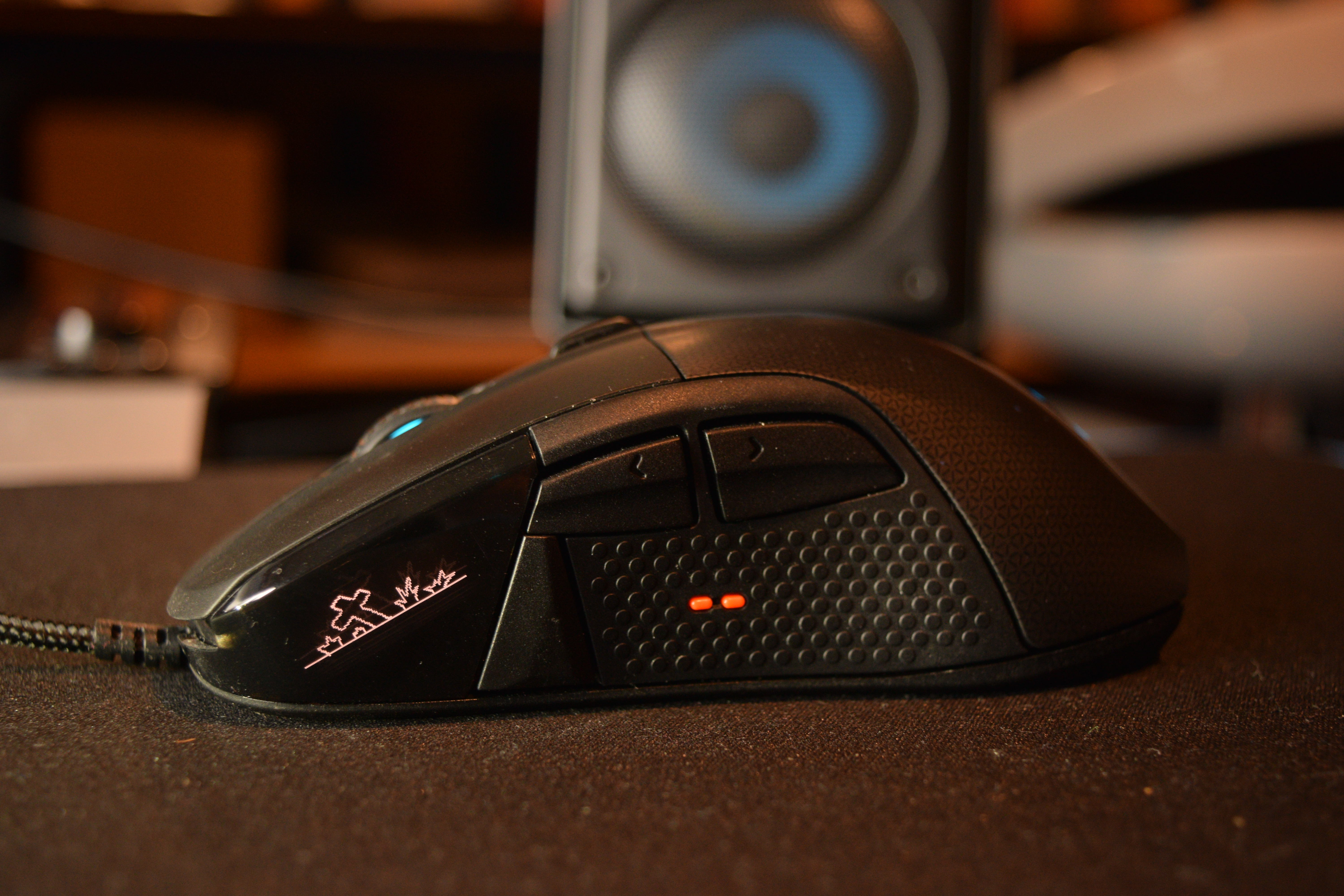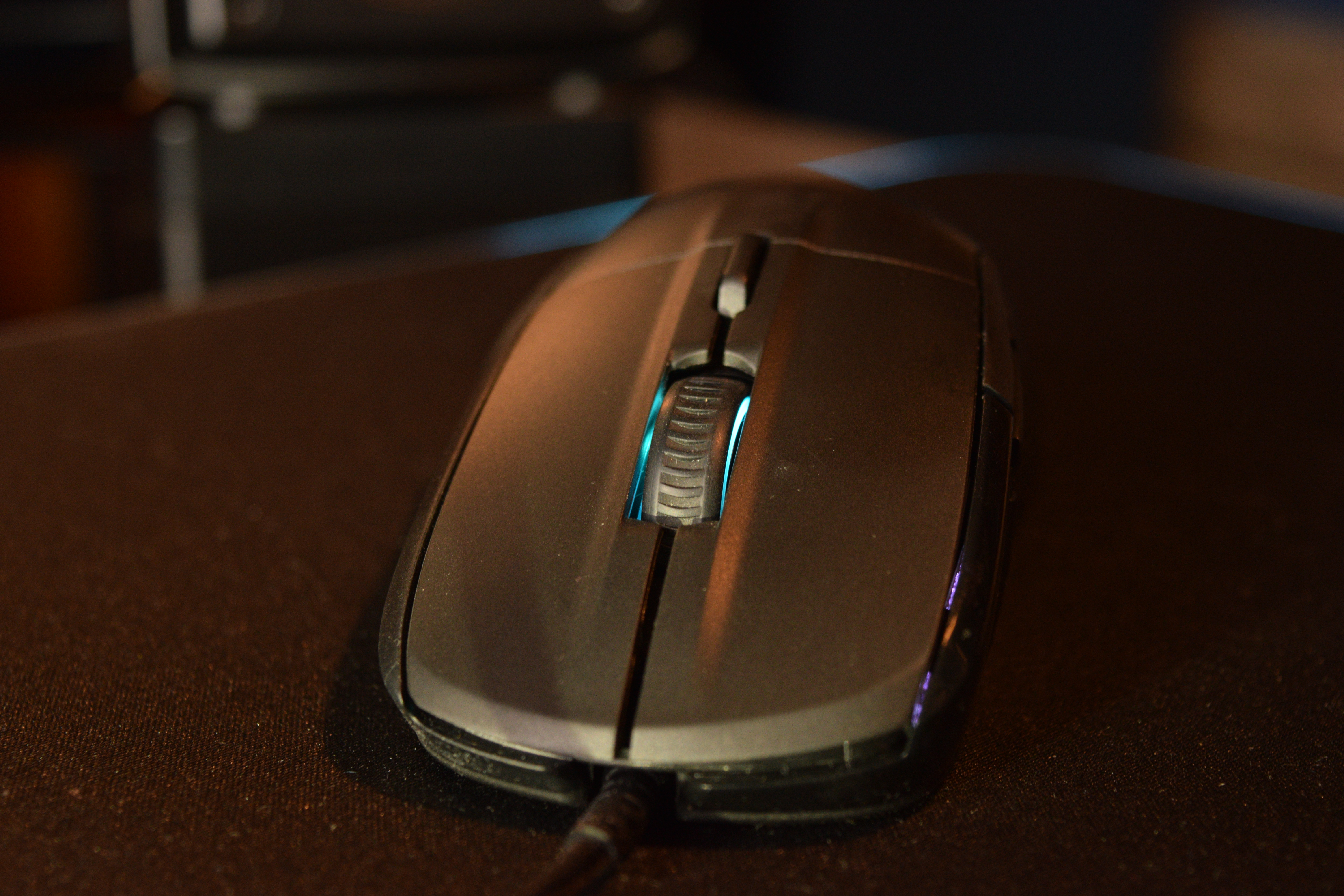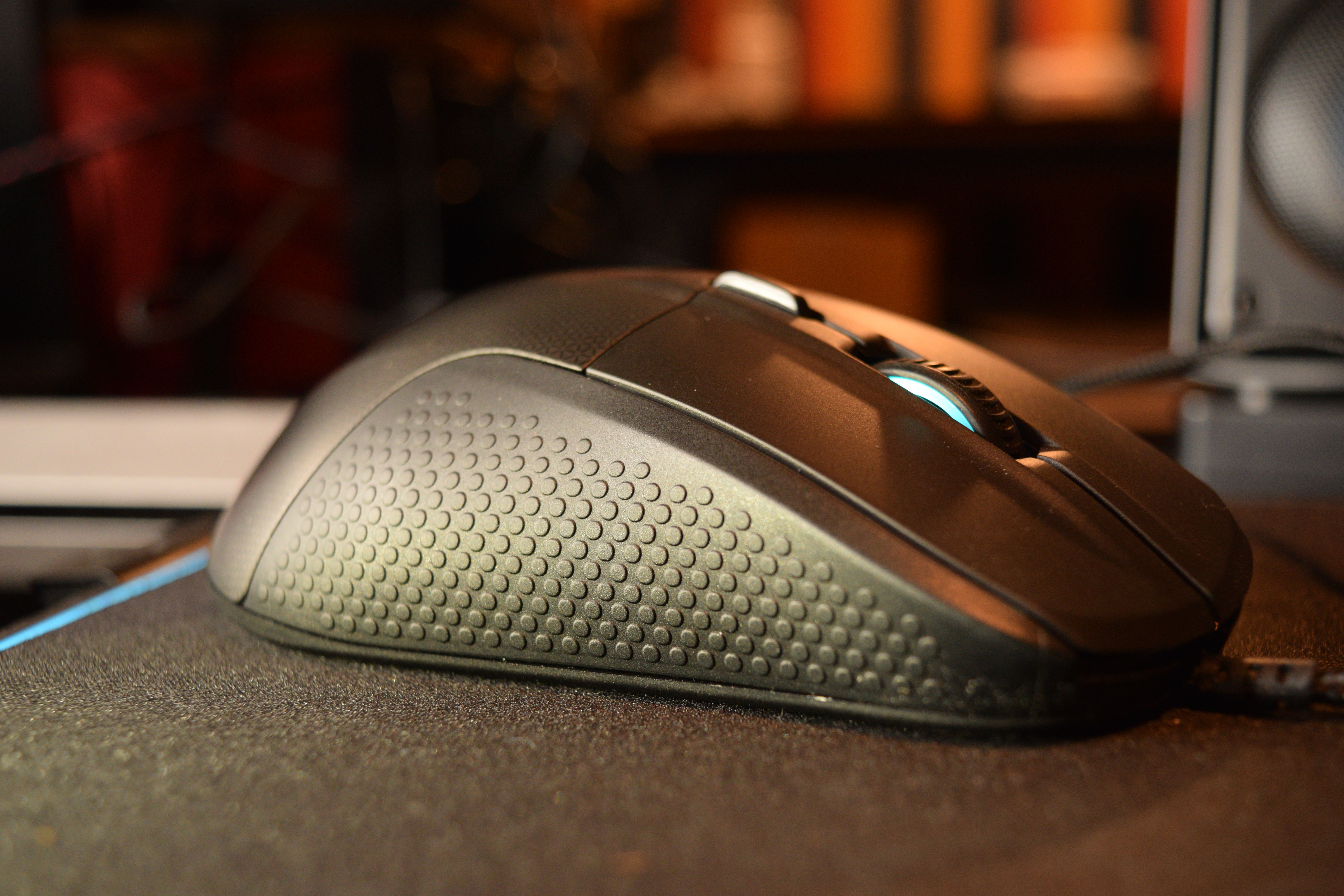
Provided by Steelseries free of charge for review.
Gaming mice have a problem; once you get past the cheaper options into the better hardware the performance is so good in terms of sensor accuracy it becomes practically impossible for the average gamer to discern any real difference between them. Sure, by running a battery of tests the minute gains of one sensor over another can be worked out, but does those differences really matter if you don’t actually notice them in real-world use? As a result, gaming mice are having to come up with other ways to attract attention. Enter the Rival 700 which has two unique features that set it apart from the competition.
One of the mouse’s two unique features is the small screen located on the left-hand side of the Rival that can be used to display basic messages, images and even animations. The interface for creating images is almost like a tiny version of Paint. You simply sketch what you want into the small area, provided you can do the design purely in black and white. You can also upload an image or even short animation which will play on an infinite loop. Of course, it’s bloody useless, a gimmick for which I can find no reasonable application other than being kind of cool.
Okay, perhaps that’s not entirely fair. Currently, there’s official support for CS:GO, Minecraft and DOTA2 which lets the display do things like track your headshot count or display your kill-death ratio. However, where the screen is located means having to turn or tilt the mouse to properly see it, and in the middle of a match it’s hardly worth doing.
The other unique feature is that the Rival 700 is capable of light vibrations to provide feedback. Or possibly a lady’s pleasure. I don’t judge. Only three games have official support at this point, the same ones mentioned previously, but by using the Engine software you create custom templates in order to get it to do things like vibrate when you hit the fire button in a shooter. There are a few different vibration types to choose from as well, which is nice. You can even set the vibration timer to activate on keyboard presses, making it a handy feature for telling you when an ability is available again. It’s not something I found myself using personally, but I feel dedicated players of things like League of Legends or Overwatch may find vibrations useful for informing them of when cooldowns are over.

Compared to the bright flashiness of both the QCK Prism and Arctis 5 that I reviewed the Rival 700 feels almost understated with just its logo and scroll wheel getting lit up by RGB LEDs which can be programmed via the SteelSeries Engine software. You can, of course, select from about 16-million shades of all he primary colors, plus select things like pulsing or colorshift. The coloring is a simple black with a repeating triangular design on the back half of the mouse. All in all, it’s a basic, nice looking mouse that prefers subtlety over the brute force of a million lights I really appreciated the simplicity of the overall design.
In terms of its build quality, the Rival 700 is a weighty mouse, coming in at 137g without cables which means it takes some extra muscle to move it around rapidly. Speaking of the cables it comes packaged with a rubber one and a braided cord, too, and you can choose which one you want. That chunky weight and the fact that there isn’t a creak or groan to be heard when picking up the mouse and giving it a squeeze gives the impression of something designed to last, able to withstand even the most childish of temper tantrums after that one goddamn player keeps killing you in LawBreakers!
As for comfort that’s a little trickier to talk about. The Rival 700 has a reasonably high back with sharpish angles toward the rear that I would have preferred had they been rounded. For me with my small hands I found the back of my palm/bottom of my wrist would touch the mousepad too easily, so I was always slightly conscious of hand positioning. Two rubber grips on the side on the side do a passable job of giving your fingers something to hold on to although I would have preferred if they were soft rather than hard. Overall the mouse felt good for both palm and claw grip, but was merely adequate in comfort for me. I still prefer Logitech’s G502
So let’s move on to the buttons, starting with the obvious. Both of the left and right clicks feel great to use with the right taking a touch less pressure to activate. Impressively I found both buttons to be almost perfectly uniform in feeling from end to end so that no matter where my fingers where they were easy to use and felt great.
The extra button on top of the Rival is for selecting CPI. Via the software you can choose between a measly two CPI amounts to assign to the button, but you can get around this limitation somewhat by having different profiles that automatically load when you fire up specific games op apps. Still, I would like to have seen at least one more CPI level be selectable by default. Two just feels limiting.

Scrolling is where we see a little bit a drop in quality. Spinning the wheel to navigate websites and things is nice and it isn’t overly loud or anything, but I did find it was quite easy to scroll too far in games when selecting weapons and so forth. Some more resistance in the wheel would have been my personal preference.
The left-hand side is home to three buttons, including two for your thumb. The closest one is big, easy to reach and has enough resistance to ensure you don’t activate it accidentally while also not being overly tough. It’s got a satisfying activation that feels a lot like the primary left and right clicks which I really like because a lot of the time on mice the various buttons can feel quite different from each other. The second one is located too far away for my tastes as I had to really stretch to reach it, but people with larger hands than my own dainty ones shouldn’t have much of a problem. The third button is located toward the front of the mouse, so naturally, it’s not one you can reach with ease but it’s nice to have the option there in case I want to program a macro to it or something. However, it’s surprisingly tough to activate, especially since you’ve got reach awkwardly for it.
And now we arrive at the thorny issue of performance because as I said at the start of my review it’s pretty hard to pick up on the tiny differences between sensors when you’re up at this sort of price bracket. Sitting inside the Rival 700 is the PixArt PMW3360, a staple of Steelseries’ mouse lineup that can hit a maximum CPI of 16,000, a number I can’t image anyone ever using unless you have a screen the size of a freaking building. Anyway, the PMW3360 has gained itself a reputation for being a reliable sensor, and I’ve got nothing bad to say about it. I’ve been using the Rival 700 for about three weeks solid across a variety of titles from the slow to the fast and it was never anything less than perfectly accurate, even when I was deliberately trying to trip it up with sharp, aggressive movements. There’s no hint of acceleration, either, or any other form of meddling getting in the way unless you decide, for some reason, to turn it on via the software.
Speaking of which Steelseries’ Engine software is a doddle to use which I very much appreciate. The layout is intuitive, letting you dive in and remap the mouse’s buttons to your hearts content. There’s a macro program that allows both the mouse and keyboard to be recorded, plus the various buttons on the mouse itself can all be remapped to mimic any key on the keyboard, something I actually made use of in LawBreakers where I mapped the screenshot key to the Rival’s thumb button. You can even reprogram the mouse buttons to activate operating system shortcuts or launch applications. And then, of course, you can save these configurations and have the Rival automatically select them when specific programs are launched. By default, the mouse’s onboard memory can store five configurations in case you plan on traveling to a LAN event or something like that, and any number of configurations can be kept on your computer. All in all it’s a robust suite of options.

It’s from the Engine software that you can also play with the LED lighting. There’s the standard 16+ million colors to pick from, plus a small selection of effects such as colorshift, or you could have the “trigger” effect where the LED remains a solid light until you press a button on the mouse at which point the color shifts to another of your choice, and then back again.
As for the sensor it can actually be taken out and swapped for the Pixart 9800 Laser Sensor if you prefer, which has to be bought seperately. You can also take off the rear cover of the mouse in favor of a differently colored one, plus there’s a nameplate at the back which you can replace with a 3D printed one of your choosing, provided you’ve got access to a 3D printer.
Right. That’s a hell of a package wrapped up in mouse form, and it comes with a pretty hefty price-tag to match. The vibration feature is very interesting, especially when you consider that console controllers have had it for ages and have been successfully using it to add a greater level of feedback and immersion into games. The little screen, however, is just pointless. Sure, it’s nice to have a little extra customization, but I can’t help but wonder how much that gimmicky screen bumps up the cost. Still, regardless this is one hell of a mouse with stellar performance, solid ergonomics, great build quality and intuitive software.






